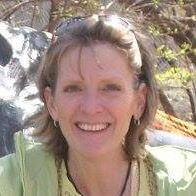Meet Us
Our staff is very proud to be a part of your story. From the small moments to the shared looks across the room, we want to facilitate your special day and celebrate your love.

Lucretia Carlson
Owner

Kyle Carlson
Manager

Kelli Fisher
Manager
Our Values
Our life philosophy is to understand and live your values, create situations beneficial to everyone involved and be prosperous.
At Stony Point Hall we hold our personal values as the foundation of both our private and professional lives.
Tale of Stony Point
Learn more about how Stony Point Hall came to be including the history of the property, land, and surrounding areas.
Before Kansas was opened for settlement with the signing of the Kansas Nebraska Act, there was a spot on the Santa Fe Trail called Hickory Point. Along the Trail, before 1854, there were often towns or settlements at intervals of a day’s ride. Hickory Point was approximately two day’s travel after leaving Westport by wagon. In 1854 it had two blacksmith shops, a harness shop, hotel, supply store, and several houses. Hickory Point was important because of its location, as it was prime settlement land.
In November 1855 Charles Dow was shot and killed at Hickory Point, and is considered to be the first victim of the Civil War. Jacob Branson was Charles Dow’s friend and roommate. Sheriff Samuel Jones arrested Branson for Dow’s murder, which later led to the Wakarusa War.
Some time around 1856 the area changed its name to Stony Point as there was another settlement called Hickory Point some 25 miles north. With the Civil War and the opening of the Transcontinental Railroad, the Santa Fe Trail was no longer used and the settlement of Stony Point eventually ceased to exist as a town.
Around 1868 the Stony Point community built a rock school one mile north and three quarters of a mile east of the town. This school became the focal point of the community by hosting church services and community activities. The land for the school was bought from the owners of Stony Point Farm. It sat on one acre in the southeast corner of the quarter section (160 acre) farm.
The Stony Point School was where local Lutherans met for religious services. On Sunday, October 10, 1868, Rev. David Earhart reported that it was suggested at a meeting a plan be adopted for securing a church and a cemetery site.
Upon Michael Herring’s sudden death in 1873, the cemetery was chosen and Michael was the first buried in what became Stony Point Cemetery. Efforts became focused on a cemetery and church building. May 10, 1898, Isaac Hemphill and family donated the land north of the church to the Stony Point Emmanuel Lutheran Church and cemetery association.
The Stony Point community was very strong in its early years. The church and school were important focal points for the community. The Stony Point Church, built in 1883 by the Eberhart family and community members, was used until 1900. It is unknown whether the preacher Rev. David Earhart retired, was transferred, or the congregation population was too low to support him. The board decided to close and lock the doors with hope of sporadic use.
No more services other than an occasional funeral service or annual picnic have been conducted in the church since. Recently a local organization of volunteers have restored the building and registered it with the Kansas Historical Society. The church is located one quarter mile east of Stony Point Hall on the south side of N600 road.
On August 1, 1860, President James Buchanan deeded the 160 acre quarter section later known as Stony Point Farm to Milton Reynolds. Reynolds served as a New York Militia Man in The War of 1812. Situated 7 miles from Lawrence, and 40 miles from both Topeka and Kansas City, the land was deeded to him as his pension. During this growth period of the country it was common for the government to give land as pension to “certain Officers and Soldiers who have been engaged in the military service of the United States.”
Seven years later Milton and his wife Francie sold the land to William Wooden for the sum of $1200. In 1868 it was Wooden who sold one acre to the town of Stony Point to build the school on for $40. For the next several years the farm changed hands many times until the now 159 acre farm was bought by George T. Fitz on January 2, 1880 for $1000.
The west portion of the farmhouse was probably constructed in 1880 by George and his wife Laura. The house was doubled in size about ten years later (1890) by Joseph W. Spurgeon, a well-known builder of the time. In the mid 1960′s the farm was abandoned for 20 years until purchased by a local entrepreneur, Pat Olkowski, who restored the old farmhouse and added a second addition with modern kitchen and master bedroom.
The large hay barn is a newer structure, having been built in 1903 by/for George T. Fitz. Again Joe Spurgeon may have been the carpenter. It is a spacious 40 by 60 foot two story building. The stone used in the 18 inch walls was quarried on the farm northeast of the barn location. The name of the mason is unknown.
On the lower floor of the barn, the south side was for the horses that were Mr. Fitz’s pride and joy. There are six single stalls and a double stall, all with mangers and feed boxes. At the west end of the row of stalls is the harness room. Cattle stalls used to line the north side of the lower floor, separated from the horses by a pull-through driveway that could be closed with a sliding door at either end. A stairway, rather than the usual ladder, led to the loft which was often used for dancing.
The barn is a unique structure, with heavy beams and distinctive support structure. It is very high, maybe 50 feet, to the ridge pole. A metal track runs the length of the barn at the peak to carry the hay in a fork or sling, through the large hay doors in the gables. These doors are hinged at the bottom and may be lowered or raised at will. The barn stands strong and true today as a testament to the fine materials and methods used in its construction.
“We don’t know any story of the cupola” says Helen Sturdy, who was born in the farmhouse in the early 1900′s. “Grandfather Fitz wanted it ornamented. He enjoyed his horses and liked to race. I guess that is the reason the stalls are a little fancy, their posts being made of hedge, topped with a knob like a newel post. He kept the yellow wood polished, I am told.”
In 1930 the place was wired for electricity and was on one of the first electric lines in the neighborhood. The barn was reshingled in 1945 by Mr. Holcom and his son-in-law, Woodrow Sturdy. Mr. Olkowski later added a four story addition to the front and large covered porch to the back.
The old hay barn and farmhouse are private structures and not available for rental. If you would like a tour of the barn, please send your request to Stony Point Hall LLC.
